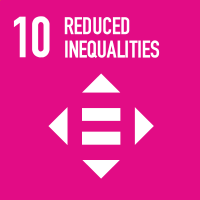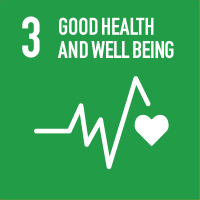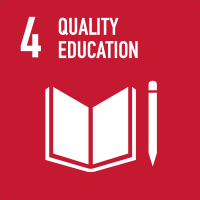Studying at the University of Verona
Study Plan
This information is intended exclusively for students already enrolled in this course.If you are a new student interested in enrolling, you can find information about the course of study on the course page:
Laurea magistrale a ciclo unico in Medicina e chirurgia - Enrollment from 2025/2026The Study Plan includes all modules, teaching and learning activities that each student will need to undertake during their time at the University.
Please select your Study Plan based on your enrollment year.
1° Year
| Modules | Credits | TAF | SSD |
|---|
Medical and scientific English
2° Year activated in the A.Y. 2022/2023
| Modules | Credits | TAF | SSD |
|---|
3° Year activated in the A.Y. 2023/2024
| Modules | Credits | TAF | SSD |
|---|
4° Year activated in the A.Y. 2024/2025
| Modules | Credits | TAF | SSD |
|---|
5° Year It will be activated in the A.Y. 2025/2026
| Modules | Credits | TAF | SSD |
|---|
6° Year It will be activated in the A.Y. 2026/2027
| Modules | Credits | TAF | SSD |
|---|
| Modules | Credits | TAF | SSD |
|---|
Medical and scientific English
| Modules | Credits | TAF | SSD |
|---|
| Modules | Credits | TAF | SSD |
|---|
| Modules | Credits | TAF | SSD |
|---|
| Modules | Credits | TAF | SSD |
|---|
| Modules | Credits | TAF | SSD |
|---|
Legend | Type of training activity (TTA)
TAF (Type of Educational Activity) All courses and activities are classified into different types of educational activities, indicated by a letter.
Physiology I and Biophysics (2023/2024)
Teaching code
4S01154
Credits
10
Language
Italian
Location
VERONA
Scientific Disciplinary Sector (SSD)
BIO/09 - PHYSIOLOGY
Courses Single
Not Authorized
The teaching is organized as follows:
Lezioni di Fisiologia I
Esercitazioni di Fisiologia I
Learning objectives
To understand the physico-chemical mechanisms of basic cellular processes: resting membrane polarization, action potential, synaptic communication, muscular contraction, stimuli transduction. To know the function of the cardiovascular and respiratory systems, their regulation mechanisms and coordination in specific tasks like the homeostasis of the internal environment, the regulation of cardiac output, arterial pressure, respiration and acid-base balance, muscular exercise.
Prerequisites and basic notions
What is physiology? Physiology seeks to understand how organs and systems integrate and interact with the goal of maintaining the homeostasis of our body at rest and in response to stress such as environmental conditions, exercise and even disease. Physiology is a quantitative science as it seeks to explain the functioning of the human body on the basis of universal chemical-physical laws. As such, graphical analysis and dimensional analysis are routinely used in physiology to describe the relationships between the variables involved. The ultimate goal of physiology is to describe the integrated dynamic functions between related organs and systems using predictive models. Physiology completes and integrates the knowledge acquired by studying anatomy, biochemistry, physics and chemistry. In order to understand the Physiology course, it is necessary that the basic notions of Chemistry, Physics, Biochemistry and Mathematics have first been assimilated, in particular: • Chemistry: the concept of pH, molarity, colligative properties of solutions, osmolarity and pressure osmotic, diffusion. • Biochemistry: concepts of enthalpy, free energy entropy; biological macromolecules, their classification and function, the main metabolic pathways, enzymatic kinetics and mitochondrial enzymes, oxidative phosphorylation • Physics: gas physics, electrophysics, surface tension, Laplace's law, basic notions of mechanics, statics and dynamics of fluids, laws of thermodynamics. • Biology: biophysical characteristics of the cell membrane; structure of the cell and cellular organelles; the genetic code; transcription and translation; protein synthesis; membrane receptors; intracellular signals and second messengers (G protein, cyclic AMP, calcium etc etc.); cellular regeneration mechanisms. • Mathematics: concept of logarithm, concepts of function and Cartesian axes, linear, power, exponential functions; methods of manipulating logarithms, concepts of derivative and integral; unit of measurement of the international system.
Program
• understand the physico-chemical mechanisms and molecular bases of fundamental cellular physiological processes such as the electrical polarization of the membrane at rest, the genesis of the action potential (excitability), the communication between cells via synapses, muscle contraction, transduction of physiological stimuli into electrical signals by the receptor cells of the sensory systems • describe the physical basis of circulation and respiration • be able to explain physiological processes, whether they relate to individual cells, organs or systems, in terms of the appropriate physical laws and chemical • know the physiology of the cardiovascular and respiratory systems • understand the mechanisms of nervous and humoral regulation of these systems and their coordination in the execution of specific tasks such as the homeostasis of the internal medium, the regulation of cardiac output and pressure arterial, the chemical regulation of breathing and acid-base balance, the execution of muscular exercise • know the values of the main physiological cardio-circulatory and respiratory parameters of healthy humans. . know the fundamental concepts of thermoregulation and metabolism in humans
Bibliography
Didactic methods
The teaching will consist of lectures. In addition to the frontal lessons, multiple choice quizzes will be organized at the end of each topic (https://kahoot.com) in the classroom or on line. Recorded lessons (in Italian and English) on specific topics will also be available.
Practical activities: Practical activities and simulations of respiratory physiology and muscle exercise will be organized in the classroom.
Teaching material: All the teaching materials related to the topics covered in class will be available on the University's e-Learning space (Moodle) of the Course. In addition to the slides in pdf format illustrated in class, the following material will be distributed: 1. Excel sheets with numerical questions that students will complete independently; 2. Detailed focus on specific topics; 3. Links to movies and videos on scientific topics related to those explained in the classroom.
In the event that students forced into COVID isolation need to recover lessons, the teacher will deliver the lesson recording or organize a remote lesson with individual Zoom videoconference during the Course.
Learning assessment procedures
Oral examination on each of the three main topics (excitable membranes and skeletal muscle, cardiovascular system, respiratory system), with one question by each of three examiners, or two questions by each of two, depending on availability. There will not be intermediate examinations nor specific modalities for the not-attending students.
Evaluation criteria
The student will be asked to illustrate the main concepts related to the topics detailed in the program also with the aid of graphs and equations in order to highlight the quantitative aspects of physiology. Exposure skills and clarity of exposure will be evaluated, as well as the ability to quantitatively illustrate the mechanisms that regulate the physiological homeostasis of organs and systems. In particular, the student's ability to reason in an integrative way and, therefore, to illustrate the integrated physiological adaptations in response to perturbations will be appreciated.
Criteria for the composition of the final grade
The examiner will propose a mark in 30/30, which will result in a weighted average according to the CFU of the two modules and the mark of 30/30 proposed by the professor of the other module.
Exam language
Italiano




